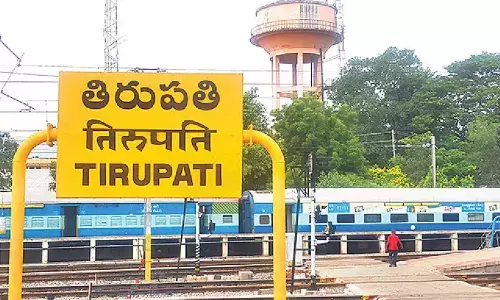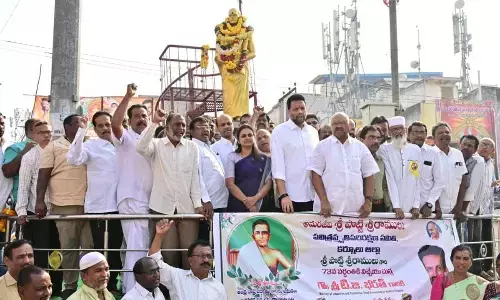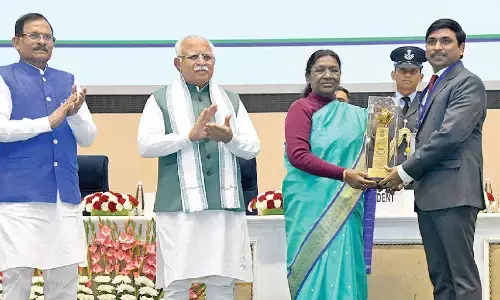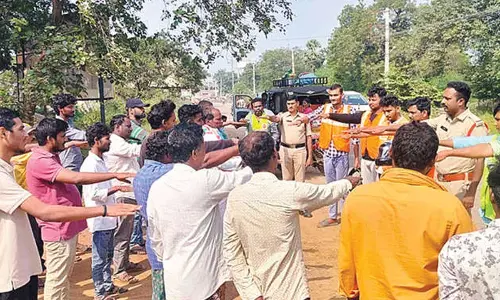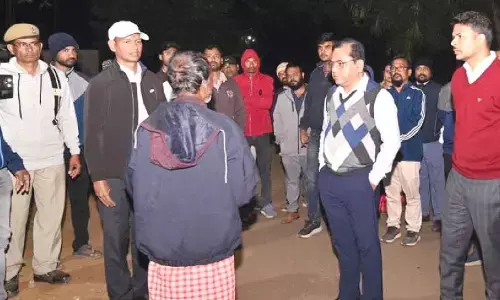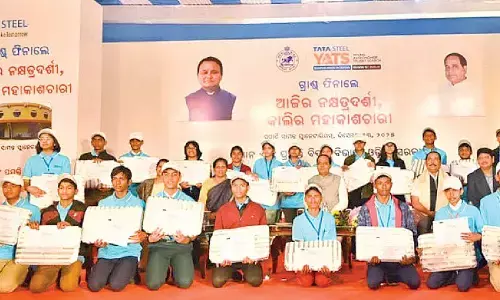Civil services spectrum: How amendments are made in Constitution
Civil Services Spectrum: How Amendments Are Made In Constitution. This article details the procedure of making amendments to the Constitution
This article details the procedure of making amendments to the Constitution
The Constitution of India was enacted on November 26, 1949 and came into force from January 26, 1950. The Constitutional makers not only included the aspirations of the people in the Constitution, but also provided for many solutions for future problems. At the same time, accepting the necessity for modifications to the Constitution in accordance to the changing need of the society, the Constitutional makers have laid down the procedure for amendment (incorporating changes) to the Constitution.
Any change to the Constitution can be made only after it is duly considered and voted on by the Legislature. The majority required to approve an amendment determines whether a Constitution is rigid (requires simple majority) or flexible (requires special majority). The following three methods are adopted to incorporate changes to the Constitution of India making it a blend of rigidity and flexibility.
I. Simple Majority - Bills passed by majority of the members present and voting are said to be passed by simple majority. The total strength of the house, number of vacancies and absentees is not taken into consideration while calculating a simple majority. However, changes made by a simple majority are not considered as a Constitutional Amendment as they are passed like any other ordinary legislation.
Provisions that can be amended by Simple Majority are-
- Admission or establishment of new states; alteration in the names or boundaries of existing states (Article 4)
- Provisions relating to acquisition and termination of citizenship (Article 11)
- Delimitation of Constitution in Lok Sabha (Article 81)
- Quorum for the transaction of business in the Parliament (Article 101(3))
- Powers, Privileges and incentives of Members of Parliament (Article 105)
- Salaries and allowances of the members of Parliament (Article 106)
- Rules of Procedure in Parliament (Article 118)
- The appointment of Judges to Supreme Court (Article 124)
- Jurisdiction and powers of the federal Court under existing law to be exercisable by the Supreme Court. (Article 135)
- Review of judgements orders by the Supreme Court (Article 137)
- Schedule 2 – emoluments allowances privileges and so on of the President the Governors the Speakers, Judges and so on.
II. Special Majority
A bill must be passed by each house by a majority of the total membership of the house (absolute majority) and by a majority of not less than two thirds present and voting. Provisions relating to Part III Fundamental Rights; Part IV DPSP and other provisions which cannot be passed by a simple majority and do not require ratification by states are passed by special majority.
III. Special Majority and Ratification by half of the State Legislatures
For certain provisions of the Constitution especially those dealing with Centre state relations/ Federal structures to be amended, a bill must be passed separately by both house of the Parliament with a special majority, then the Bill must be ratified by one half of the states by passing a resolution with a simple majority to that effect. Provisions that require ratification from States are:
- Election of President (Article 57)
- Extent of executive power of the Union (Article 73)
- Extent of executive power of the state (Article 162)
- High Court for Union Territories (Article 241)
- Union Judiciary (Chapter IV of Part V)
- High Courts in the States (Chapter V of Part VI)
- Any of the three lists in the Seventh Schedule
- The representation of states in Parliament
- Provisions dealing with amendment of the Constitution
Article 368 of the Constitution lays down the procedure of amending the Constitution by the Parliament and mentions the two other methods – special majority; special majority and ratification of half of the states. Procedure for Amendment as laid down under Article 368
Introduction of the Bill - A Bill to amend the constitution can be introduced in either house of the Parliament and not State Assembly. The bill can be introduced by any member and does not require prior permission of the President. An amendment must be passed by both the houses separately. In case of a dead lock, there is no provision for a joint sitting of both houses.
Meaning of majority of total membership of the house - “Total membership of the house” means that it is the majority of the actual membership of the house but the majority of the total prescribed strength of the house notwithstanding the vacancies therein
Ratification by the States - For amendments requiring he ratification of the states, there is no specified time limit for such ratification. As soon as one half of the states ratify the amendment with a Simple Majority it is sent for President’s assent. Also if a state has Bicameral legislature then both houses must ratify the amendment separately.
President’s Assent - In the original constitution, there was a provision where in the President can refuse to give assent to the constitutional amendment Bill. The 24th Constitutional Amendment Bill, 1971 made it binding on the President to give his assent to a bill passed under Article 368. However no time limit is specified for giving assent and therefore the President can keep the Bill pending for some time.











